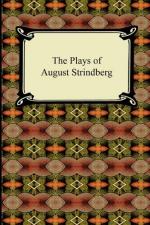|
This section contains 4,358 words (approx. 15 pages at 300 words per page) |

|
SOURCE: Carlson, Harry G. “Easter: Persephone's Return.” In Strindberg and the Poetry of Myth, pp. 124-36. Bekerley: University of California Press, 1982.
In the following essay, Carlson provides an in-depth view of the play Easter.
One might argue that Easter only narrowly deserves to be included among Strindberg's major plays. Although audiences have been attracted to what was for Strindberg an unusually serene and reconciliatory tone, there is an awkwardness about the play. The playwright's effort to inform his drama with the solemnity of religious ritual observance by hanging the act structure on the temporal divisions of the Easter Passion—Maundy Thursday, Good Friday, and Easter Eve—led to uneven results. References to Christ are so numerous, analogies to the Passion so obviously drawn, that the effect produced is embarrassingly close to religiosity. Despite these weaknesses, however, the play is redeemed by an elemental power centered around one of...
|
This section contains 4,358 words (approx. 15 pages at 300 words per page) |

|


